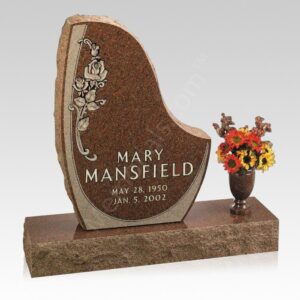Grave Stones also known as memorial headstones and cemetery headstones have a wide variety of cultural roles, not the least of which, of course, is to memorialize loved-ones for the ages.

Grave Stones have been used for centuries to mark the graves and pay lasting tribute to the dead, and they came into popular use in America shortly after Englanders colonized the land in the 15th century. While grave stones initially shared popularity with less permanent grave markers – such as wooden crosses – they are now almost routinely the marker of choice for all graves. As cemeteries have evolved into what historians have termed a “cultural institution” grave stones have been at the center of that transformation. Grave stones are usually elaborately designed tributes to the lives of those who they memorialize and, as such, they are key elements of the garden-like atmosphere that characterizes most of today’s cemeteries. The beautiful structure of most grave stones makes a stroll through one of today’s cemeteries reminiscent of a walk through a lovely park.
The styles of grave stones have changed somewhat dramatically as cemeteries have evolved. Grave stones of yesteryear were usually large, up-right pieces of sculpted stone that had written information about the people whose graves they marked. By contrast, most of today’s grave stones are smaller, simpler, plaque-like pieces made of bronze and/or granite, or a combination of the two, and are displayed directly on the ground at the head of graves. The more elaborate upright grave stones are still in use today, but mostly as markers of multiple graves (such as a family’s plot), while the smaller, modern grave stones are used to mark individual graves. The upright grave stones are less common today than they once were because time has shown that they have a tendency to deteriorate and fall over as years pass. Grave stones that are installed at ground level, also known as flat markers, are designed to weather the elements much longer.

Although the styles have changed over the years, the tradition of grave stones is as strong as ever. Following centuries of tradition, in cultures all across the globe, most people alive today can expect to be remembered through the ages by grave stones, personalized to include their names, dates of birth and death, special designs, and other relevant information. Even people whose bodies have been cremated (a tradition whose popularity is increasing dramatically) are often memorialized with grave stones installed in their family cemetery plots. There are even cremation grave stones, which are designed to forever hold and protect the final remains of an individual. This is in keeping with the advice of many psychologists who say that, even if a person’s ashes are scattered at sea, having a specific, special place in which to memorialize a loved-one is an important part of any family’s grieving. Grave stones, of course, establish that permanent memorial.
Besides their obvious emotional value, grave stones are also valuable to historians who often need to document people’s lives for decades, or even centuries, after deaths have occurred. The sturdy construction of grave stones assures that people will be remembered for such documentation long after the elements have destroyed paper records or technology has made electronic records obsolete. Headstones will truly memorialize a loved one for all eternity.
